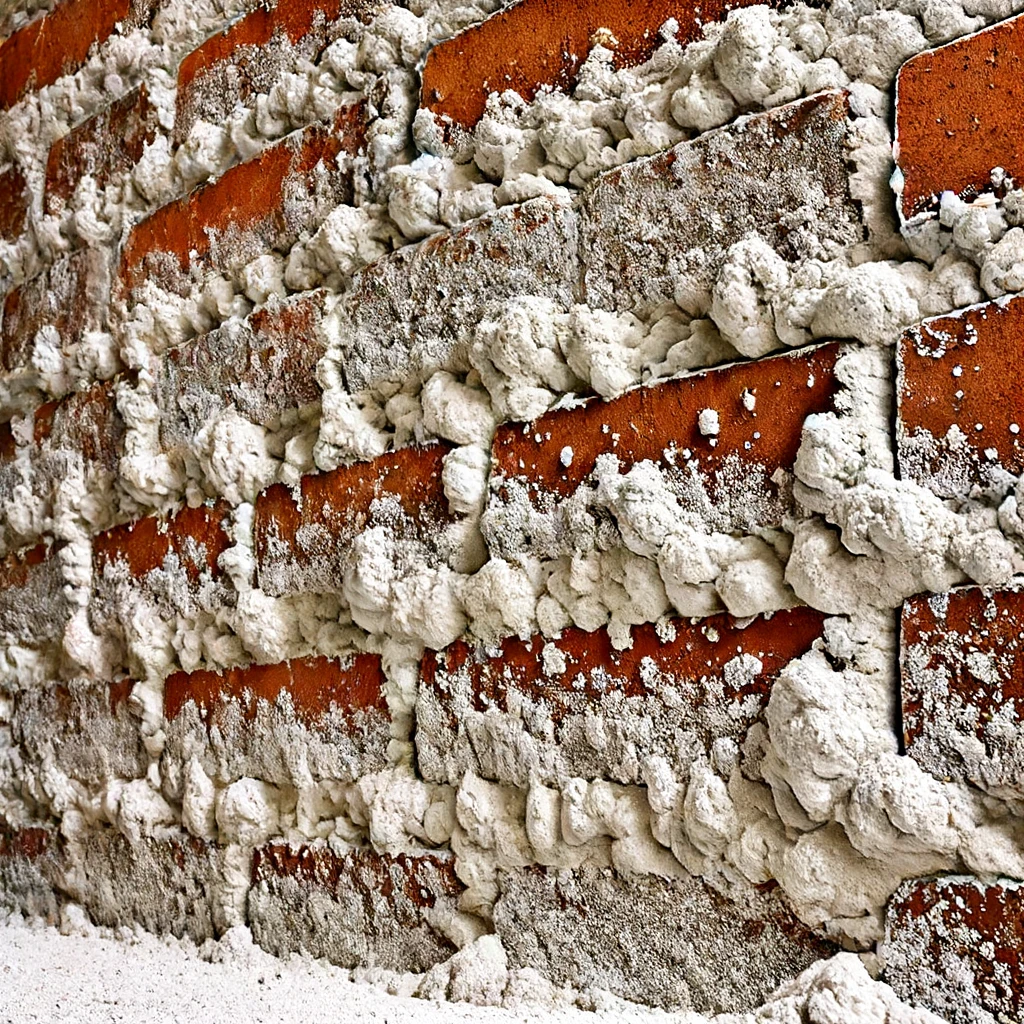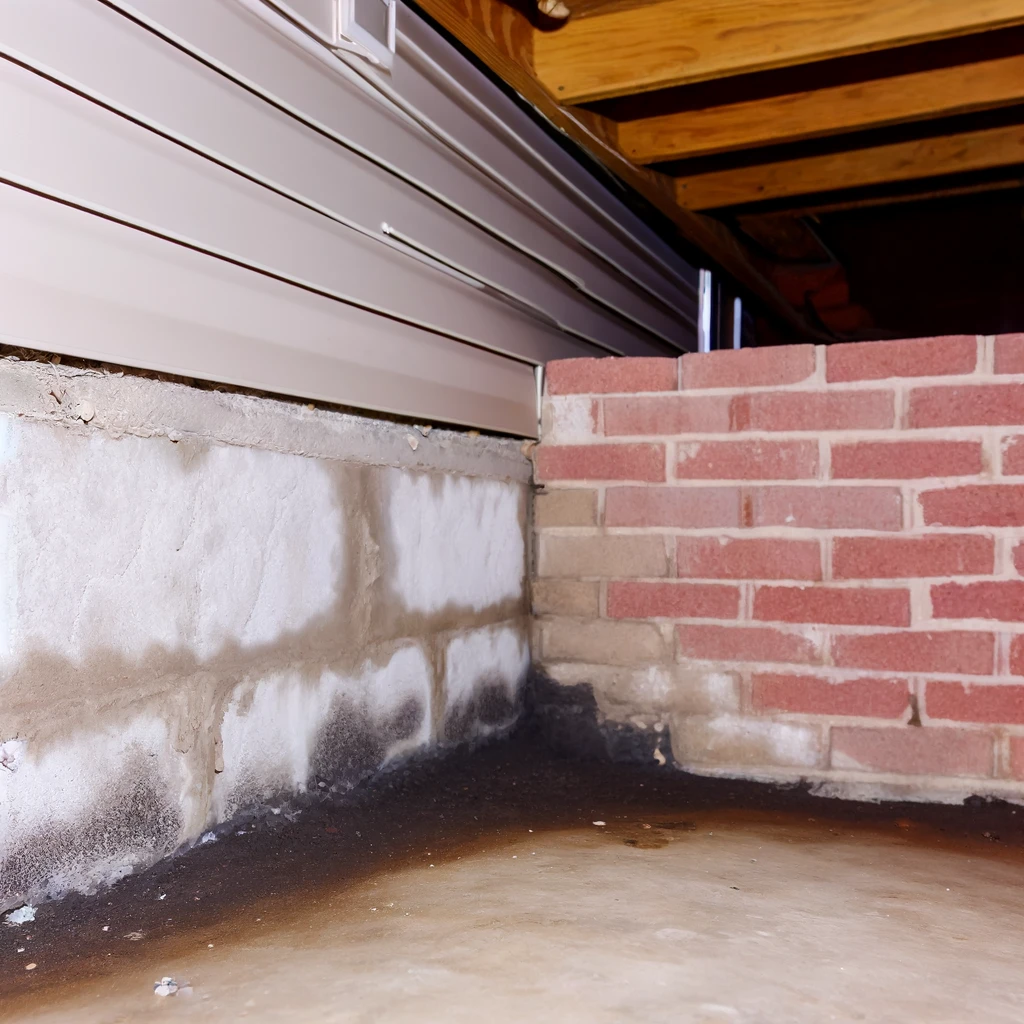Introduction to Understanding Efflorescence on Brick
Have you ever noticed a whitish powder on brick surfaces and wondered what it is? This article will provide some valuable insight. We will explore the phenomenon known as efflorescence.
We’ll clarify what efflorescence is, how you can identify it, and the implications of its presence. Additionally, we’ll discuss methods to treat and prevent this occurrence, ensuring the aesthetic appeal and integrity of your brick surfaces.
From start to finish, we’ll also cover DIY remedies like white vinegar and professional solutions. So, whether you’re a homeowner maintaining your property or a professional builder focused on masonry best practices, keep on reading for some solutions.
Table of Contents
Understanding Efflorescence on Brick and Its Implications

What is Efflorescence?
Efflorescence is a crystalline deposit of salts that can form on the surface of bricks, concrete, or other building materials. This occurs when water moves through a porous material and brings salts to the surface, where they crystallize.
- Common in masonry
- Occurs mostly in new constructions
- Looks like a whitish powder
Identifying Efflorescence on Brick
Efflorescence generally appears as white, grey, or yellowish deposits on brick surfaces. It is most noticeable after a building has been exposed to moisture.
Causes of Efflorescence
- Water infiltration
- Construction materials containing salts
- Poor drainage systems
Visual Indicators
| Visual Indicator | Description |
|---|---|
| White powder | Common salt deposit |
| Grey or yellow stains | Less common, indicates other mineral deposits |
| Blistering or flaking | Potential secondary effect on bricks’ surface |
Is Efflorescence on Brick a Problem?
Efflorescence itself is not harmful to the structural integrity of your brickwork, but it can suggest underlying issues.
Potential Issues
- Persistent moisture problems
- Aesthetic concerns
- Sign of poor waterproofing
How to Address Efflorescence
Removing efflorescence can be straightforward, but addressing the root causes is more critical.
Removal Methods
- Dry Brushing: Use a stiff brush to remove surface deposits.
- Water and Vinegar: Clean with a mixture of water and vinegar.
- Specialized Cleaners: Use commercial efflorescence removers for tougher stains.
Preventative Measures
- Proper Drainage: Ensure good water drainage around your structure.
- Use Quality Materials: Opt for low-salt construction materials.
- Sealing and Waterproofing: Apply sealants to masonry surfaces to repel water.
For more detailed information, check out this article on The Spruce which provides comprehensive tips on how to deal with efflorescence.
Best Remover for Efflorescence

Selection Criteria for Best Remover
Selecting the most effective solution for removing efflorescence from brick surfaces involves considering several factors:
- Strength of the remover
- Environment-friendly nature
- Safety in handling the solution
- Effectiveness against stubborn stains
- Size of the area to be cleaned
Popular Efflorescence Removers in the Market
There are several efflorescence removers available in the market, each with varying strengths and specific application methods.
Singerman Laboratories Efflorescence Remover
This products is touted for its non-acidic nature and can be safely used on colored or stained surfaces. It’s powerful enough to tackle stubborn efflorescence without damaging the underlying material.
ProSoCo Sure Klean Custom Masonry Cleaner
This variant is best suited for new bricks. It’s designed to remove efflorescence while being safe on the surrounding metal work.
Eagle Cleaners Efflo-Etch
A mild acidic cleaner, this is a popular choice for homeowners looking to tackle minor efflorescence issues at home.
| Product | Description | Strength |
|---|---|---|
| Singerman Laboratories Efflorescence Remover | Non-acidic, safe on colored materials | High |
| ProSoCo Sure Klean Custom Masonry Cleaner | Safe on new brick and metal work | Medium |
| Eagle Cleaners Efflo-Etch | Mildly acidic, good for minor staining | Low |
Do’s and Don’ts of Using an Efflorescence Remover
The effectiveness of efflorescence removers can be significantly improved by adhering to some key pointers:
Do’s
- Follow manufacturer’s instructions
- Pre-wet the area
- Apply using a brush
- Rinse thoroughly
Don’ts
- Don’t apply on hot surfaces
- Don’t allow the solution to dry on the surface
- Don’t use on damaged surfaces
Long-Term Solutions
While efflorescence removers are effective in getting rid of the visible symptoms, it’s more important to focus on long-term solutions like improving the drainage system and using quality building materials. You will also need reliable waterproofing to ensure the problem doesn’t recur.
To understand the process of efflorescence cleaning in more detail, you can refer to this comprehensive guide by Bob Vila.
Using White Vinegar to Remove Efflorescence
Effectiveness of White Vinegar
White vinegar, a common household item, is known for its mild acidity and versatile cleaning properties. When it comes to removing efflorescence, white vinegar can be quite effective due to its ability to dissolve mineral deposits.
Why White Vinegar Works
White vinegar contains acetic acid, which helps dissolve and neutralize the salts and minerals found in efflorescence.
- Acidic Nature: The acetic acid in vinegar reacts with the alkaline salts in efflorescence, breaking them down.
- Accessibility: Readily available in most households, making it a convenient cleaning option.
- Eco-Friendly: Unlike some commercial cleaners, white vinegar is less harmful to the environment.
How to Use White Vinegar for Efflorescence Removal
To effectively use white vinegar for removing efflorescence, follow these simple steps:
- Prepare the Solution: Mix equal parts white vinegar and water in a bucket.
- Apply the Solution: Use a sponge or brush to apply the vinegar solution to the affected area.
- Scrub the Surface: Gently scrub the efflorescence with the brush to help dissolve the salts.
- Rinse Thoroughly: After scrubbing, rinse the area with clean water to remove any remaining vinegar and dissolved salts.
- Dry the Area: Ensure the area is dried thoroughly to prevent further water infiltration and efflorescence formation.
Additional Tips for Using Vinegar
While white vinegar is an effective and simple solution, there are a few additional tips to keep in mind for better results:
- Pre-Wetting: Wet the surrounding area before applying vinegar to prevent it from being absorbed too quickly.
- Safety Measures: Wear gloves and eye protection to avoid skin and eye irritation from the vinegar.
- Repeat Treatment: In some cases, you may need to repeat the vinegar application to completely remove the efflorescence.
- Test Small Area First: Test the solution on a small, inconspicuous area first to ensure it does not damage the surface.
For a more detailed look at removing efflorescence using white vinegar and other methods, you might find this guide by Family Handyman helpful.
Understanding the Best Cleaning Agent for Efflorescence on Brick
What Makes a Good Cleaning Agent for Efflorescence?
Choosing the right cleaning agent for removing efflorescence from brick involves evaluating various factors to ensure effective and safe removal of the unsightly deposits.
- pH Balance: The cleaning agent’s pH should be suitable for use on masonry without causing damage.
- Effectiveness: The solution should efficiently dissolve or break down mineral salts without extensive scrubbing.
- Safety: Ensure the agent is safe to use around plants, pets, and people, and doesn’t release harmful fumes.
- Compatibility: The cleaner should be compatible with the specific type of brick and any surrounding materials.
Top Cleaning Agents for Efflorescence Removal
Several cleaning agents stand out when it comes to removing efflorescence from bricks, each with its unique set of properties and advantages.
Commercial Efflorescence Cleaners
These are specifically formulated to target and eliminate efflorescence without damaging the brick surface.
| Product | Description | Special Features |
|---|---|---|
| Sure Klean Light Duty Restoration Cleaner | Suitable for light-to-moderate efflorescence removal | Safe for historic and delicate masonry |
| Pedro’s Special Efflorescence Cleaner | Heavy-duty cleaner for tough deposits | Fast-acting and highly effective |
| QUIKRETE Efflorescence and Rust Remover | Multipurpose cleaner also effective for rust stains | Safe on a variety of surfaces, including concrete |
DIY Remedies
Common household items can also serve as effective cleaning agents for removing efflorescence at home.
- White Vinegar: As discussed, white vinegar is a readily available, eco-friendly option that effectively dissolves salt deposits.
- Baking Soda Paste: Mix baking soda with water to create a paste that can be scrubbed onto the efflorescence for gentle removal.
- Lemon Juice: The citric acid in lemon juice can help dissolve efflorescence in a manner similar to vinegar.
Application Tips for Cleaning Agents
Regardless of the cleaning agent, proper application techniques are crucial for achieving the best results without damaging the brick.
Preparation Steps
- Surface Cleaning: Remove loose debris and dirt from the brick surface before applying any cleaning agent.
- Test Patch: Always test the cleaner on a small, inconspicuous area to ensure it doesn’t damage or discolor the brick.
Application Process
- Read Instructions: Follow the manufacturer’s guidelines for dilution and application of commercial cleaners.
- Saturate the Area: Wet the brick surface thoroughly before applying the cleaning agent to prevent absorption into the brick.
- Apply and Wait: Apply the cleaning agent using a brush or sprayer and allow it to sit for the recommended time.
- Scrub Gently: Use a stiff brush to gently scrub the efflorescence, taking care not to damage the brick surface.
- Rinse Well: Rinse the area thoroughly with clean water to remove any remaining cleaner and dissolved salts.
For further insights into effective efflorescence removal, especially using specialized products, visit this detailed guide by Family Handyman.
In Summary: Dealing with Efflorescence on Brick
Highlighting the visible result of water flow through masonry, efflorescence on brick is characterized by a white, gray, or yellowish crystalline deposit of salt. Though it doesn’t impact the structure’s integrity, the aesthetic concerns and its corollary prediction of potential moisture problems or poor waterproofing warrant attention.
Addressing efflorescence involves both removal and preventative measures – with dry brushing, a water-vinegar solution, and commercial cleaners forming popular choices for the former, and proper drainage systems, use of low-salt materials, and sealing being the latter options.
Frequently Asked Questions – FAQs
What is efflorescence, and is it harmful?
Efflorescence is a crystalline deposit of salts that can appear on various building materials, such as bricks and concrete. It’s not harmful to the material’s structural integrity, but it may indicate underlying moisture issues or inadequate waterproofing.
What causes efflorescence?
Efflorescence occurs when water infiltrates a material and brings salts to the surface. It’s commonly caused by issues such as poor drainage systems, or using construction materials that contain salts.
How can you remove efflorescence?
You can remove efflorescence using methods such as dry brushing to dislodge the salt deposits, or by using a water-vinegar mix or specialized cleaners to dissolve the deposits. Afterward, the treated area should be rinsed thoroughly and allowed to dry.
How can you prevent efflorescence?
You can prevent efflorescence by implementing proper drainage around your structure, using low-salt construction materials, and applying sealants to masonry surfaces to repel water.






